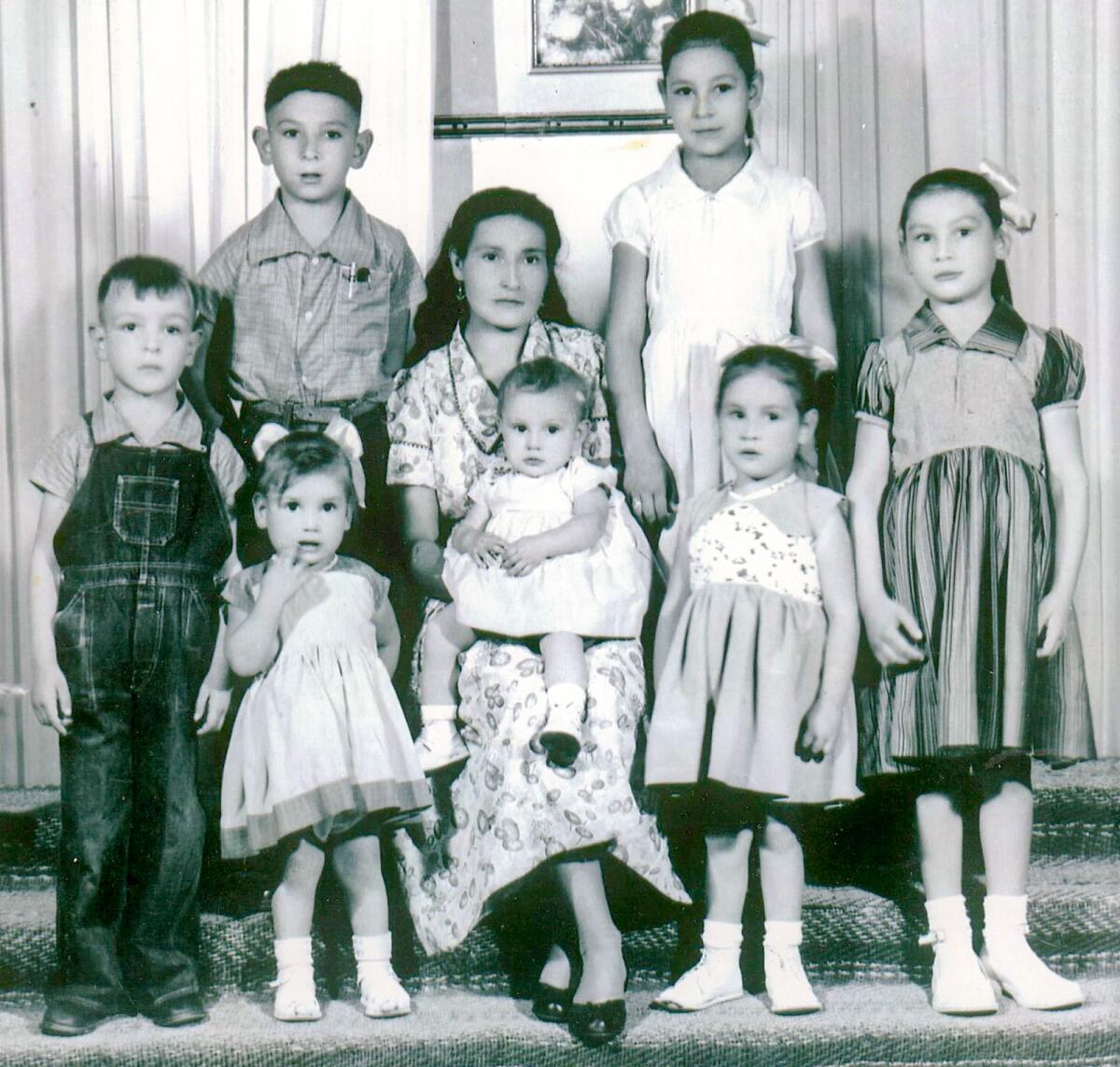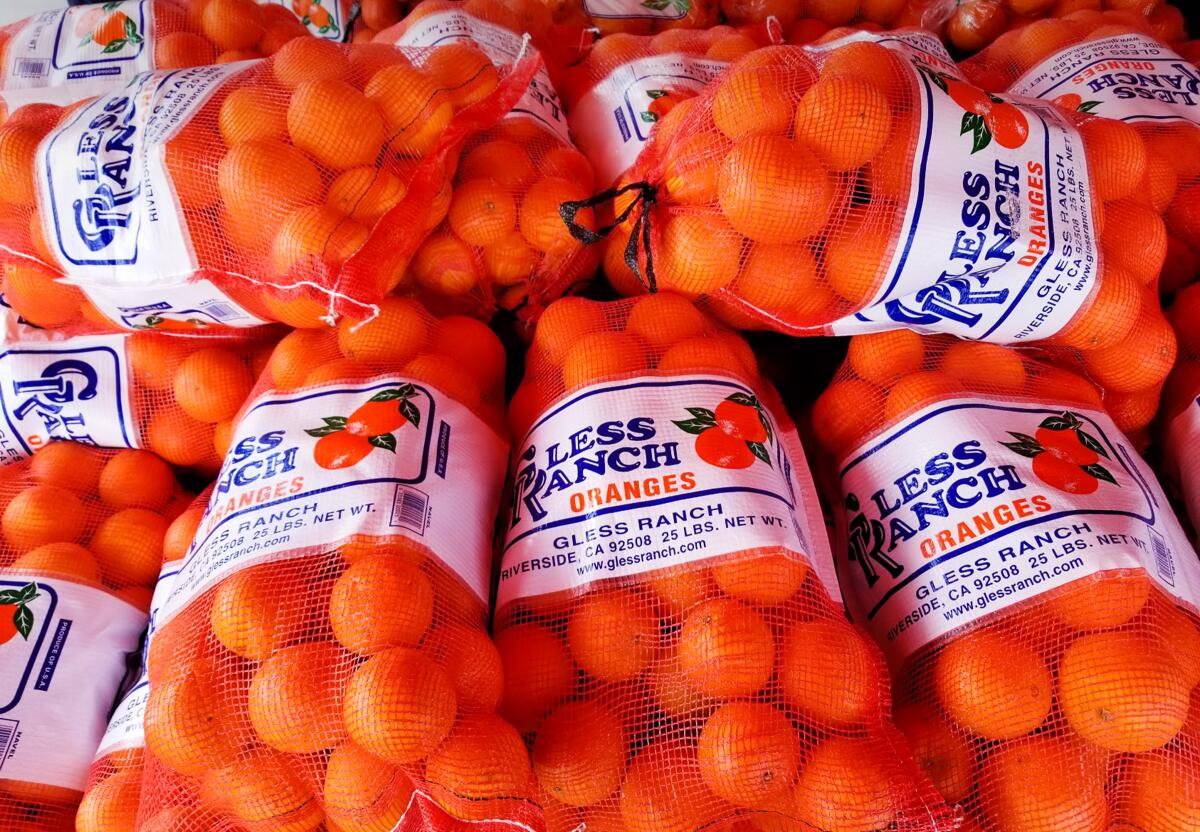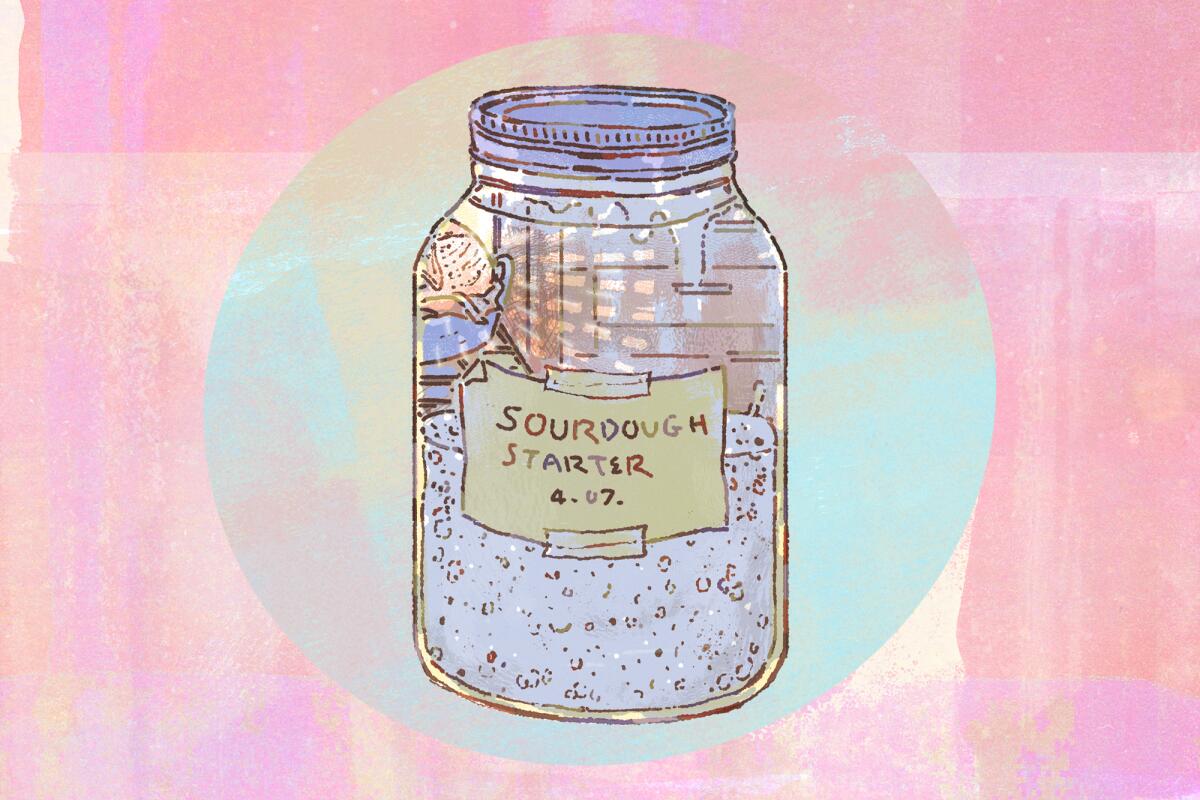A mother shares her food memories of growing up in Mexico

Happy Motherâs Day weekend. This marks my first Motherâs Day as a mom, and Iâm pretty thrilled to spend it celebrating with my young daughter. (I suspect breakfast will involve fluffy, homemade pancakes.)
With most of us under quarantine, the general mood of the holiday this year is bittersweet. Many families, mine included, have canceled gatherings. Iâll miss our pozole brunch, especially the part when we sit around the table for hours trading stories and jokes.
Eat your way across L.A.
Get our weekly Tasting Notes newsletter for reviews, news and more.
You may occasionally receive promotional content from the Los Angeles Times.
As a kid I was riveted by my momâs stories. Many involve small-town characters with oddball nicknames and indeterminate fates: The shy shop girl known as La Purina (nicknamed after the feed store where she worked); the hard-working brothers known as Los Triperos (because they grilled and sold tripas near the main town square); and the local teacher, Julia La Burra (âJulia the Donkeyâ), who punished unruly students by making them keep their arms raised until their limbs went numb.
This week, I interviewed my mom, Maria Teresa EscĂĄrcega, to share some of her memories with you.
Tell us a little about growing up.
I was born in TepatitlĂĄn de Morelos, Jalisco, an hour from Guadalajara. People were friendly, but back then it was a much smaller town and life was slow. There was a lot of emphasis on âel quĂŠ dirĂĄnâ (âWhat will people say?â). You know that old saying: âPueblo chico, infierno grandeâ (âSmall town, big hellâ).
My dad made roof tiles and mosaic flooring for a living. My mom was an incredibly hard-working homemaker and sold cross-stitching on the side. We didnât have running water so she spent a lot of time going to the arroyo to wash our clothes.
I was the second eldest of 12 children and there was always a baby in the house. We are 10 girls and two boys. I had to help my mom with everything: wash the clothes, hold the baby. Before I turned 5, I was already in charge of tending to much of the household.
Enjoying this newsletter? Consider subscribing to the Los Angeles Times
Your support helps us deliver the news that matters most. Become a subscriber.
What are some typical things you ate growing up?
On Sundays, it seemed like everybody in town ate the same thing: caldo de res (beef and vegetable stew). There were stalls in the market selling bundles of cabbage, calabaza, chayote, onion, carrots and cilantro to make the stew.
Another common dish was mole de espinazo (pork spine mole). It was typical to buy one or two kilos of the pork spine at the butcher shop, cook it and use the juices to make mole. It was great with nopales and verdolagas (purslane).
You made fresh tortillas, right?
A large part of our days were spent taking the nixtamal (nixtamalized maize kernels) to the molino (stone mill) to have it ground into masa.
Most women would get up sometime between 4 a.m. and 6 a.m. to drop off their bucket of nixtamal and then go to the nearby market to buy meat and vegetables while they waited for the masa.
You did this every day?
Every day. It was customary to only eat fresh tortillas, and that meant daily trips to the molino. The first time I tasted prepackaged tortillas was when I came to the U.S.
Some days you got to the molino and somebody would tell you: âSe quebro la piedraâ (âthe stone brokeâ). That meant you had to wait for somebody to tear down the mill and replace the volcanic stone used to grind the masa. It was very time-consuming. There were three molinos in town back then. By the time I left Mexico, the mills were disappearing and they were being replaced by tortillerias.
Tell us a little about the family kitchen.
We had a wood-fire stove, so a lot would depend on whether we could find kindling. My mom would send us out to gather twigs and bark, but we had to be careful because scorpions liked to nest in the tree bark. It wasnât like nowadays, where you can turn on a stove on a whim.
Everything got easier when my mom saved up money for a kerosene stove. There were lots of days we went many hours without eating.
Did you get to enjoy any special treats?
My dad had a funny habit he picked up from his own father. Whenever business was good, he bought pan dulce. He would come into our room very early when we were still sleeping and left a fresh piece of pan on our pillow. I canât explain how much joy it brought us to wake up to a fresh piece of bread. He didnât do that often, but I remember it well.
Can you tell us how you moved to the U.S.?
My dad was a bracero (one of the millions of Mexican guest workers in the U.S. during World War II). He was an agricultural worker and traveled back and forth between the two countries for many years. He already had a visa and he wanted us to get our papers so we could also earn a living in the U.S.
He came down with a painful ulcer and he thought he was going to die. He told us: âThere is no way for women to make a living in Tepa. I want you all to get your papers in order in case Iâm not around soon.â My brothers got their papers processed first. Then in 1968 I came up next. It took about four years to finally reunite all the family in California.

What was it like to move to a new country?
It was very hard. I walked my little sisters to school and we were regularly harassed by a group of neighborhood cholos who called us things like âdirty paisasâ (âPaisa,â short for âpaisanoâ or âpaisana,â is slang for someone who is from your home country).
Tell us about what you did when you arrived in Southern California in the late â60s.
I was in my early 20s and there was a lot of tumult. I got a job picking lemons, oranges and grapefruit in the groves around Riverside, Hemet and San Jacinto with my dad and brothers. After that I picked chile peppers and onions in Temecula. I picked grapes in Pomona and strawberries in Anaheim. Back then that part of Anaheim was full of fields, if you can imagine it.
I also worked as a sorter at a citrus packing house in Arlington Heights in Riverside, and worked for a time packing carrots near Perris.
My least favorite job was picking lemons because at the end of the day your face and arms would be completely scratched up by the thorny branches. You have to wear thick leather sleeves and gloves to do that job. It was incredibly hard work. I was asthmatic and terrified of falling off those tall ladders. We got paid 30 cents a box for the oranges and a few cents more for lemons.
What do you wish people knew about picking vegetables and fruit?
I want people to know that you should really appreciate and respect people who harvest food for a living. Itâs incredibly hard work with miserly pay. You canât imagine until you do it yourself.
Any words for mothers reading this?
Enjoy your kids and grandkids. Every moment counts. Even if we canât be together right now, we have technology. Itâs easy now to see the faces you love across many miles. Itâs easier than ever to tell someone you love them.
Ask the Critics
Do you think most restaurants will be able to rebound once they reopen?
â Jessica, Facebook
This is a complicated question with no easy answers. When California dining rooms officially reopen, operators will face a grim new economic reality and requirements that may include masks and gloves on staff, temperature checks and reduced capacity. Restaurants with obvious advantages â favorable lease agreements, leaner operating costs, and a steady following, to name a few â will find the next few months much easier. For a glimpse into how some restaurant owners (and other business owners) are preparing to survive a post-lockdown world, check out this story put together by my colleague Sam Dean.
Have a question for the critics?
Our stories
â Just because restaurants are closed, it doesnât mean you canât treat mom to a special meal. Jenn Harris has a terrific guide to Motherâs Day takeout in L.A. and Orange County.
â Genevieve Ko shares the best chocolate chip banana bread youâve ever tasted â and itâs vegan.
â Exciting news: Genevieve Ko and Ben Mims have a new cooking newsletter. Sign up here for fresh cooking inspiration.
â I canât think of a better way to kick the quarantine blues than with Lucas Kwan Petersonâs completely factual and 100% correct Ben & Jerryâs Ice Cream Power Rankings. Also: Congratulations to Lucas for being nominated for a James Beard Award! Find out which L.A. restaurants and chefs also made the list this year.
â Rotting food and hungry masses: Kevin Rector reports on how the food industry has been flipped on its head by the COVID-19 pandemic.
â Amy Scattergood tells us whatâs available from L.A.-area farmers right now and where to get it, and what to do with all that extra sourdough starter youâve been feeding during quarantine.
â Finally, in case you missed it, check out Bill Addisonâs roundup of 12 excellent cookbooks for your quarantine reading pleasure. (Some bookstores are offering curbside pickup.) Have a great weekend.

Eat your way across L.A.
Get our weekly Tasting Notes newsletter for reviews, news and more.
You may occasionally receive promotional content from the Los Angeles Times.



